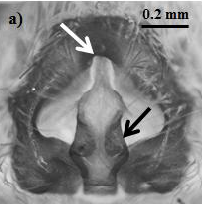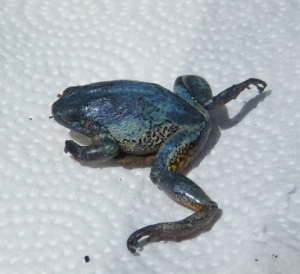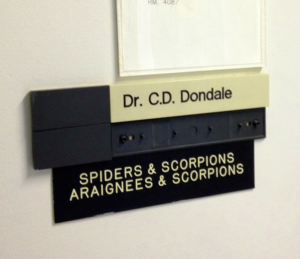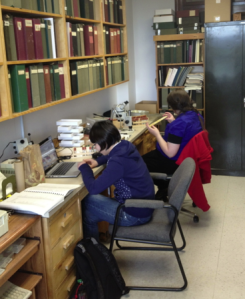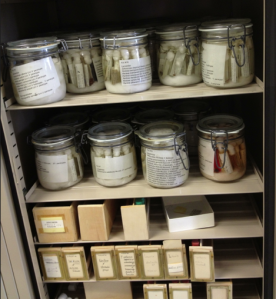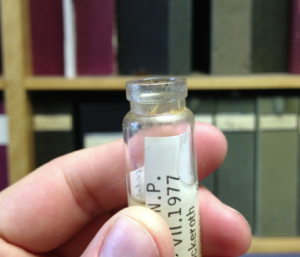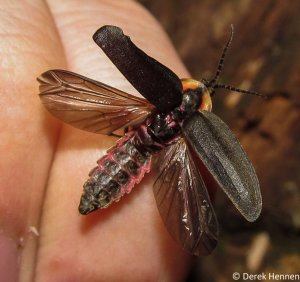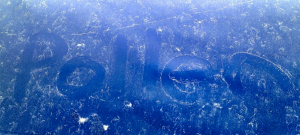This is re-posted from the Entomological Society of Canada’s blog, and is written by Chris Buddle (McGill University) and Dezene Huber (University of Northern British Columbia)
Last autumn there was quite an interesting discussion on twitter among some entomologists in Canada about the ‘job search’ – more specifically focused on the process of seeking tenure-track academic appointments. Many of us shared our sob stories, and although the time, place and characters varied, the common element was REJECTION. Those of us who currently are lucky enough to hold faculty appointments remember the rejection to success ratio, and some of us still have stacks of rejection letters. While most of us really enjoyed the academic freedom that came with working as a postdoc, the job-search process was more often than not discouraging and deflating, and a really difficult time in our lives.
Towards the end of the PhD program, most of us are riding high – our papers are getting published, we are truly ‘experts’ in our fields of study, we are being congratulated, buoyed by our peers and mentors, and we are ready to take on the world. We found ways to get a post-doc and perhaps traveled to a different country for additional experience, with a sense of hope, optimism, and enthusiasm for the next stage of our careers.
Then, like the world supply of helium, our hopes were quickly diminished.
“I will easily get a job interview at THAT University”.
Nope. Not even an interview.
“Perfect – that job advertisement was MADE for me – they will hire me. It’s a perfect fit”.
Nope. A mass e-mail rejection letter instead.
“I’m the GREATEST in my field of study. Universities will be asking me to apply”
Nope. That never happens.
”I’m sure that I’ll be seriously considered for this position”
Nope. The rejection letter came back saying that there were more than 400 applicants for the position.
“Even if I don’t get the job, I’ll be able to get feedback from someone on the committee.”
Nope. It’s highly unlikely that, among the 400 applicants, anyone on the committee even remembers you.
There are really two ways to look at this. It is possible to get discouraged and frustrated, and give up hope OR it’s possible to see that persistence can pay off and eventually the right job will come along, and you will be competitive. Sure, the opportunities have to be there, but that kind of timing and ‘luck’ isn’t something you can control.
Here are a few pointers that will hopefully help you think about that tenure-track job search, and give you a sense of optimism:
- It will take a huge dose of patience and persistence, but there ARE tenure-track jobs out there for people with Entomological interests, even in Canada. Recently, Manitoba hired an entomologist, and University of Ottawa just hired an assistant professor on the evolution of plant-pollinator interactions.
- University professors do eventually retire! (…Although it needs to be noted that the reality in the current economy is that their positions are not always replaced)
- You don’t have to restrict your options to only University positions. We know of faculty members who worked in private companies, or in government, and made a lateral transfer, eventually, to academia. Your holy grail may be a tenure-track job, but other opportunities are equally rewarding and could eventually get you a tenure-track job. Or you may find that life “beyond the ivory tower” is much to your liking anyhow. In fact, you may be interested in the advice column at Chronicle.com by that very name.
- Be creative with your CV. There are relatively few jobs for entomologists, sensu stricto, but there are jobs for evolutionary biologists, ecologists, or other more ‘general’ disciplines (Look: you can apply for a term position in biology at St Mary’s!) Re-work your cover letters and CV to reflect your potential in these jobs, and that you use insects as ‘model organisms’. And always tailor your cover letter and CV to any job for which you apply. Don’t just send in the same material to every search committee. Search committees are looking for that elusive thing that we call “fit.”
- Keep your eye on the ball: to get that coveted university position, the peer-reviewed publication remains the MOST IMPORTANT item on your CV. Publish, publish, publish. During this stage of your career, keep the focus on that part of the research process. In particular, enjoy the fact that, as a postdoc, you are relatively free to conduct research and publish without many of the other responsibilities (e.g., teaching, administration) that will come with a tenure-track post.
- Be realistic. If a job ad states that the committee is looking for an acarologist specializing in the mites of toucans, and you are an acarologist who studies toucan mites, then you have a good chance of landing an interview. If the job ad asks for a “terrestrial ecologist working at any scale from microbial to landscape” and you fit somewhere in there, chances are so do a few hundred other recent graduates.
- When you see something that looks potentially appropriate for you, apply. Rejection is painful but costs nothing; not applying to something that might have worked out is doubly painful. People who have agreed to write you letters of recommendation will be patient with you (if they are not, perhaps they are not the right people to give you a letter…?)
- Have another postdoc or your mentor read through your application material. Chances are your mentor has been on a few search committees and can give you useful tips.
- Every time you apply for a job, consider it a chance to improve your application material.
- When you do land an interview, prepare for it like there’s no tomorrow. You are a researcher, do your best to figure out everything that you possibly can about the department to which you are applying and, even more, the personalities that make up that department. Once you get an interview, this means your CV is strong enough, and the job interview is about the ‘fit’.
- Landing an academic position is not always going to be in the cards for everyone. It is best to have alternate plans so that you don’t get stuck in the so-called postdoctoral holding pattern for years and years. At least one of us (DH) committed to himself to start to explore alternate options at the five year mark after walking the convocation stage. Have a plan B. Your Plan B might actually turn out better than your Plan A in the end.
- Rejection in terms of tenure-track jobs is really just a warm-up to the continual sense of rejection you will feel if you do end up working as a Professor. You might as well get used to it. This is not a statement to bring on doom and gloom: it’s the reality. You must develop broad shoulders.
Rejection is a fundamental and core part of the academic life: The publication process is becoming so difficult that you can pretty much assume that your paper will get rejected the first few times around (check out this paper about rejection rates…). Funding agencies are cash-strapped, and it’s getting harder and harder to find ways to fund research projects. High caliber graduate students will ‘shop around’ for the best graduate program, and will often reject your laboratory. Be a practitioner of academic kung fu – use the weight of rejection against rejection itself by learning from it and applying it to your next attempt.
Depressed yet?
Don’t be. A tenure track has so many advantages, and these far outweigh the annoying stream of rejections. And the other options available to a bright, young researcher are often as appealing (and usually pay more) than being on the tenure track anyhow. ..but that’s a topic for another post.


